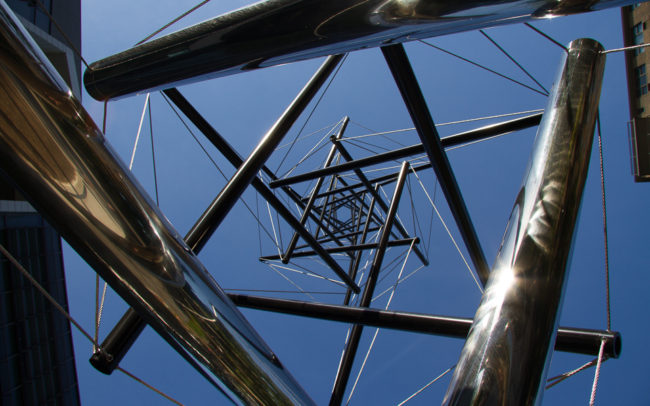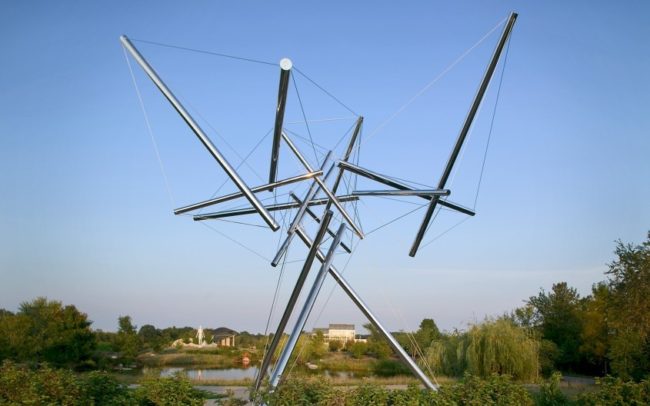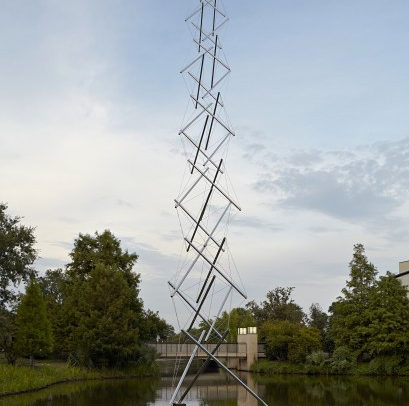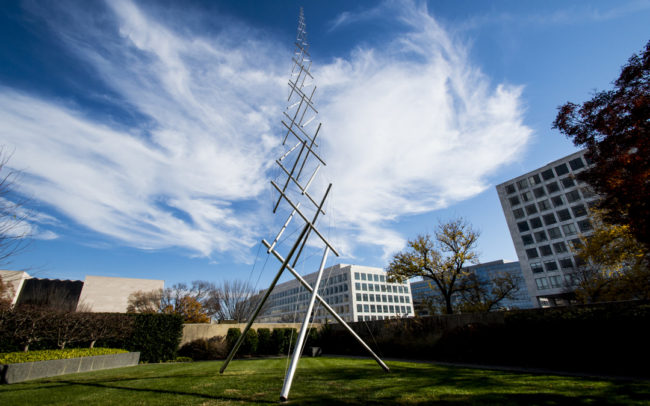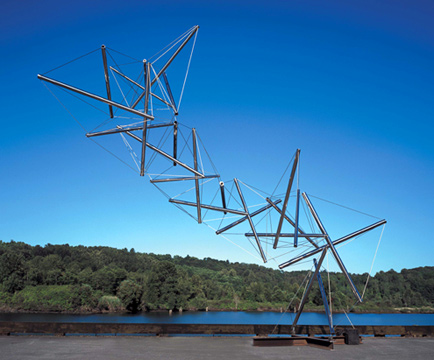Kenneth Snelson (1927–2016) was an American sculptor and photographer, renowned for his contributions to the field of contemporary sculpture, particularly in the areas of tensegrity structures and kinetic art. Snelson’s work is characterized by its intricate balance of tension and compression, with his sculptures often consisting of floating components held together by a network of cables and rods without touching each other, creating a sense of ethereal stability and elegance.
Snelson’s exploration of tensegrity—a term coined by Buckminster Fuller, with whom Snelson had a collaborative and somewhat contentious relationship—revolutionized not only the world of art but also influenced architecture and engineering. His sculptures, which range from tabletop size to monumental outdoor installations, exemplify a profound understanding of physical forces, bringing to life the complex interplay between rigidity and flexibility.
One of his most famous works, “Needle Tower” (1968), is a towering structure that exemplifies the principles of tensegrity, demonstrating how isolated components can float in space, supported by a network of tensioned cables. This and other works by Snelson are celebrated for their visual simplicity and technical complexity, embodying a form of sculptural poetry that invites viewers to reconsider their understanding of space and structure.
Beyond sculpture, Snelson also had a keen interest in photography, particularly panoramic photography, which allowed him to explore and document the spatial dynamics of the natural and built environment from a wide-angle perspective. This interest in capturing the essence of space and structure further informed his sculptural practice, adding depth to his exploration of form and balance.
Kenneth Snelson’s legacy is profound, leaving behind a body of work that continues to inspire and influence artists, architects, and engineers. His innovative approach to sculpture challenged conventional notions of form and space, making him a pivotal figure in the evolution of modern and contemporary art.

